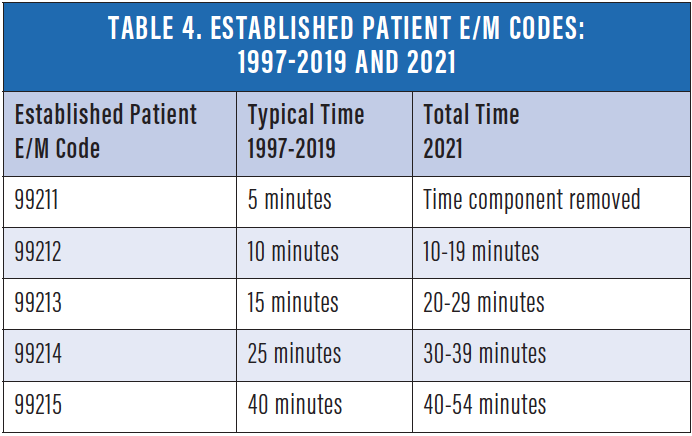How Accurate E/M Coding Benefits Patient Care and Medical Practices

The medical field is complex, especially regarding the nuances of medical coding. Accurate E&M codes are vital for the administrative side of healthcare and play a significant role in ensuring patients receive appropriate care. When these codes are applied correctly, they streamline the process of documenting diagnoses, treatments, and billing, thus facilitating a seamless integration between healthcare providers, insurers, and patients. This article delves into the intricacies of the E/M coding system and underlines its importance in the contemporary healthcare landscape.
Understanding Evaluation and Management Codes
Evaluation and Management codes, commonly known as E&M codes, are the engines that drive the billing and documentation processes behind patient care. These alphanumeric codes serve as a standardized shorthand, representing the level and complexity of patient services, from brief office visits to prolonged, in-depth consultations. E/M codes are organized into different categories and levels, each corresponding to specific criteria and documentation requirements. This coding system is designed to ensure that healthcare providers are reimbursed for the level of care they give, which is reflected in the detailed nature of these codes.
An accurate depiction of the visit through E/M coding is essential from a billing perspective and ensures that the medical record accurately reflects the patient’s health status and care. In case of a patient’s referral or transfer of care, these codes provide the subsequent healthcare professionals with a brief history of previous medical evaluations and management strategies.
The Impact of E/M Codes on Patient Care
The implications of E/M coding extend far beyond billing; they are essential in managing patient care. Coding provides a standardized language that allows healthcare providers to communicate patient needs and services rendered accurately. This shared understanding helps coordinate among various specialties, especially in complex cases requiring multidisciplinary approaches. When E/M codes are precisely assigned, insurers can quickly process claims, ensuring patients aren’t burdened with undue out-of-pocket expenses or delays in receiving care. Moreover, accuracy in these codes supports the provision of quality assurance and clinical research data, which in turn informs best practices and health policy decisions.
Financial Implications of E/M Coding for Healthcare Providers
Healthcare providers’ financial sustainability is closely tied to the precision of E/M coding. Accurate coding translates into proper compensation for services rendered, thus maintaining the economic viability of practices. Missteps in coding, such as undercoating due to fear of audits or unintentional overloading, can lead to underpayment, audits, and even legal consequences. In addition to individual service reimbursement, E/M codes contribute to the broader financial landscape of healthcare by influencing provider ratings and incentive programs linked to outcome measures. Therefore, a comprehensive understanding of E/M codes is fundamental for optimizing revenue cycles within medical practices.
Avoiding Common E/M Coding Errors
Mistakes in E/M coding are not uncommon, given the complexity of medical records and the subtleties involved in selecting the appropriate code. Undercoding can sell services short and affect the bottom line, whereas overcoding might trigger audits and accusations of fraud. Even simple clerical errors can lead to claims being rejected, causing unnecessary revenue cycle delays. Continuous education and meticulous documentation can drastically reduce these errors. Coding professionals are encouraged to keep abreast of changes in coding practices and are often seen wielding the most up-to-date information as their best defense against inaccuracies.
The Evolution of E/M Coding Guidelines
To address the demands of a dynamic healthcare environment, the E/M coding guidelines undergo periodic revisions. These changes aim to alleviate the administrative burden and better reflect contemporary clinical practices. One recent example is the significant changes to the evaluation and management services in the CPT code set, which simplifies the documentation process, reduces ambiguity and allows healthcare providers to focus more on the patient than the paperwork. These updates highlight an ongoing effort to ensure coding guidelines keep pace with the ever-evolving field of medicine.
E/M Coding and Healthcare Technology
The rise of healthcare technology has significantly influenced the application and management of E/M coding. EHRs have revolutionized how patient information is recorded, stored, and accessed. Integrating these digital systems into healthcare facilitates the accuracy and efficiency of applying E/M codes. Quality EHRs come equipped with built-in safeguards that help prevent common coding mistakes. Additionally, these systems enhance the cohesive flow of information across different service providers. Utilizing platforms and services that understand the role of electronic health records in today’s medical setting is instrumental in optimizing the use of E/M codes within practice operations.
Legal and Compliance Concerns With E/M Coding
Adherence to legal standards and compliance requirements is non-negotiable regarding E/M coding. For instance, the Health Insurance Portability and Accountability Act (HIPAA) sets forth specific guidelines around the privacy and security of medical records and how E/M codes are utilized. Missteps can result in significant fines and legal actions, not to mention the reputational damage that follows non-compliance. It is incumbent upon healthcare providers to remain updated on these statutes and integrate compliance into their daily coding and documentation practices.
Training and Resources for E/M Coding Proficiency
Developing a team proficient in E/M coding only happens by chance. It is the result of deliberate investment in training and resources. Many educational programs and certification courses that specialize in medical coding are available. Additionally, experienced coders often participate in workshops and seminars to hone their skills and stay current with the latest guidelines and technologies. Investing time and resources into ongoing education is a commitment that healthcare providers must prioritize to ensure the quality and sustainability of their coding processes.



